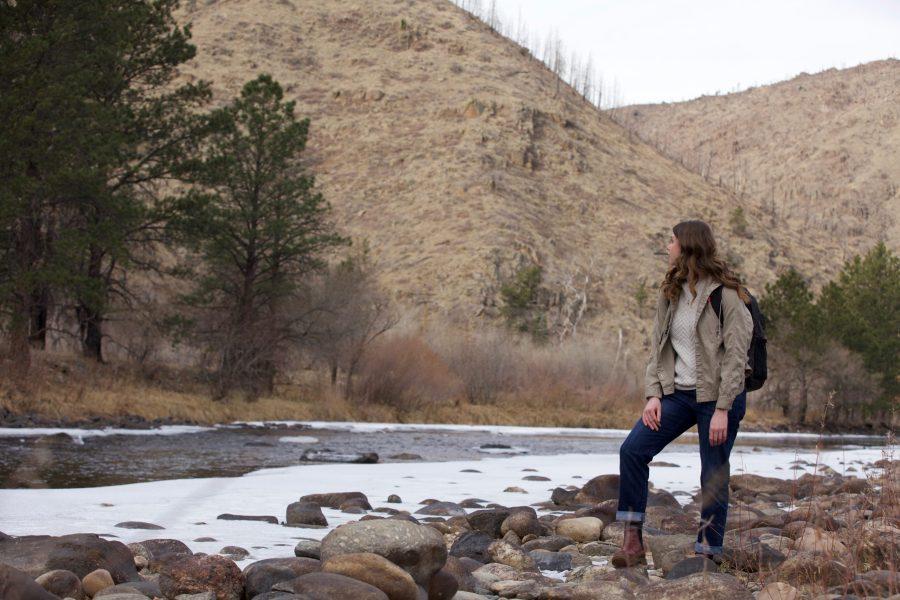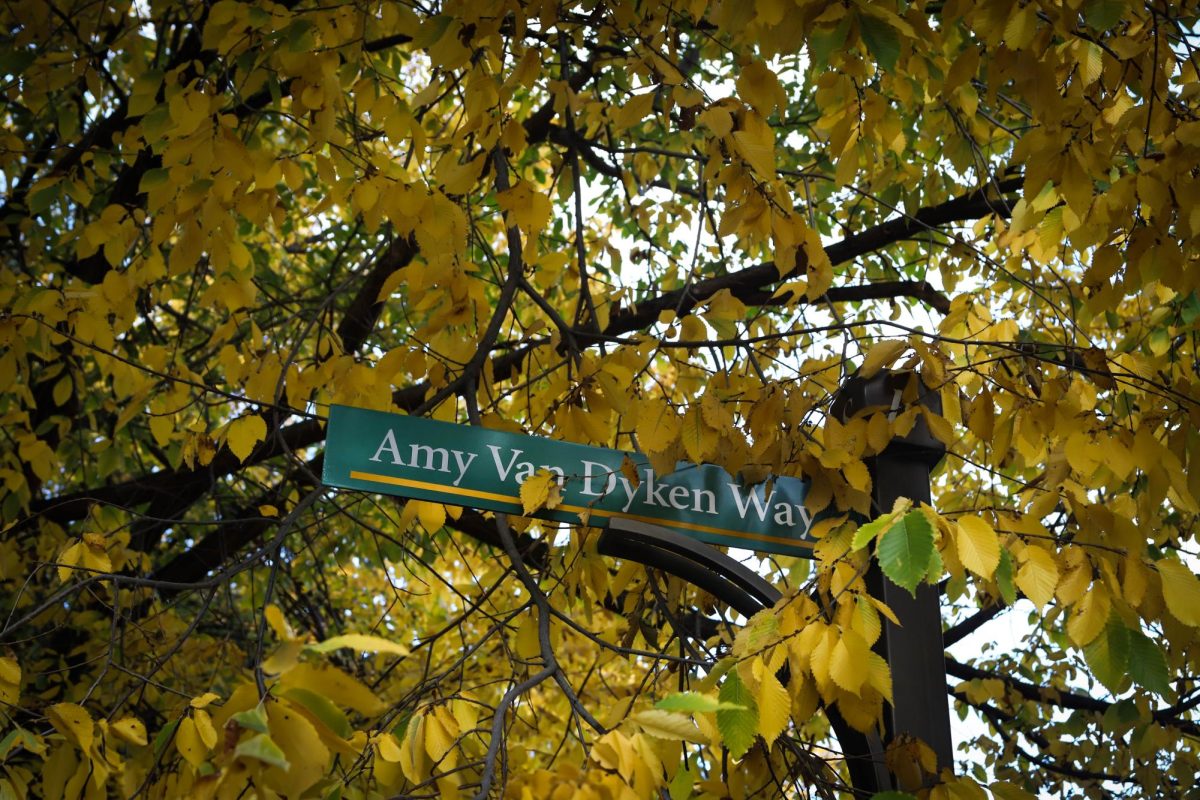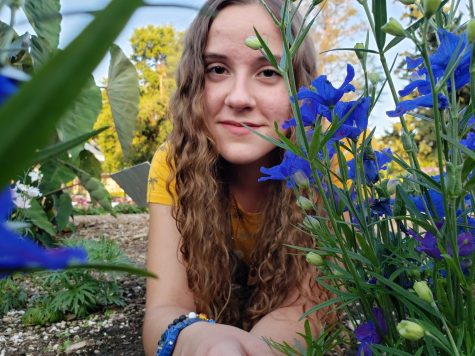While wildfires may seem like a natural part of life in Colorado, no different from tornadoes or other severe weather events, wildfires have increased in severity and caused concerning damage in recent years, especially for students living near the fires or pursuing a career related to environmental conservation.
The Cameron Peak fire ignited Aug. 13 near Chambers Lake and Cameron Pass. For months the high winds and dry conditions fueled the fire as it burned through the state. With its proximity to Fort Collins, the Cameron Peak fire, among the others in the state like the East Troublesome fire and the Calwood fire, affected Colorado State University students in many unique ways.

After arriving back from a study abroad trip, CSU student Hannah Willis couldn’t escape the flames. Willis, a fourth-year fish, wildlife and conservation biology major, spent a little over a semester in Tasmania for a study abroad program. She was there during Australia’s record-breaking bushfire season and came home to the largest wildfire in Colorado state history. Willis compared Colorado to Australia and says it was scary knowing this could turn into a regular thing.
“I think the question of whether or not climate change exists is ridiculous at this point,” Willis says. “I think the fires are related at least in part to climate change, and so, I think this just affirmed that if anything.”
According to the Center for Climate and Energy Solutions, climate change plays a large role in wildfires. The warmer temperatures and dry conditions not only support the spread of fire but leads to an increased amount of mountain pine beetles weakening trees and adding fuel for the flames.
The word stressful barely covers Willis’ experience. Knowing her parents were at their home in Estes Park made it hard to focus on class and everyday tasks. Her family was in between the two largest wildfires in Colorado history, with the Cameron Peak fire on one side and the East Troublesome fire 10 miles away on the other. Many people feared the two would merge and leave nowhere to go.
Willis couldn’t go to Estes Park right away because of the highway closures, but she called her mom every day. When the fires became too bad, Willis was able to meet her mom at the Red Cross, and eventually, everything worked out. Her mom was allowed to go back home without having to evacuate again.
During this time Willis felt amazed by all the people helping out. Her job at Bird & Jim in Estes Park set up an impromptu soup kitchen for firefighters and many other stores around town gave discounts to first responders. Natural disasters are unfortunate, but Willis says it brings people together.

“I’m so grateful for all those people that were working out there because I felt pretty powerless,” Willis says.
Another fish, wildlife and conservation biology major named Julia Webb shared another side of this experience. This third-year student hiked Dream Lake in Rocky Mountain National Park twice among other places this summer, but now most of those places have fire damage.
“As a wildlife student and someone who enjoys the outdoors these fires do really hurt,” Webb says. “It is going to be really devastating to go back to those favorite places of mine and it’s not going to be the same as it ever was.”
The fires in Colorado this year are also impacting Webb’s education. Part of her major requires going to the Colorado State University Mountain Campus.
“It’s a shame I couldn’t experience it because of COVID this summer, and next summer it’s not gonna be the same because of the fire,” Webb says.

Firefighters saved the historic buildings at the CSU Mountain Campus, but for Webb, the most disappointing part comes from not being able to see the gorgeous natural beauty destroyed by the fires this year.
When Webb drove home to Longmont, which is about 45 minutes away from Fort Collins, not being able to see any of the mountains on the Front Range evoked an emotional response.
“I actually started crying,” Webb says. “That’s a little personal but it’s true because I was like ‘wow, this is devastating. I can see that this is going to become way worse before it gets even close to getting better.’”
Webb was able to see flames from a completely different fire called the Calwood fire near her hometown. Although it started Oct. 17 and was much smaller than the Cameron Peak and East Troublesome fires, seeing the flames made everything more real. The fires literally became too close to her home in Fort Collins and Longmont.
In total, the Cameron Peak fire led to a lot of damage and burned over 200,000 acres, but the cause is still unknown according to InciWeb, an information system provided by the United States Forest Service.
Many people in Colorado have never seen something of this magnitude, but Conner Dobson, a senior in the CSU art department , is no stranger to wildfires.
As a high schooler in Southern California, he witnessed a nearby wildfire and he stayed up one night to watch the flames.

“It comes over the mountain, as it spreads out across the hill it just leaves this black void behind… you immediately realize you can’t see anything there because there is nothing there anymore,” Dobson says.
While Dobson says the concern about wildfires goes away, especially with this fire because Fort Collins had Horsetooth Reservoir acting as a shield, the shock and depression that comes from a wildfire never ceases.
“The fire hit me pretty hard because I’ve spent a huge amount of time in the Rocky Mountain National Park,” Dobson says. “It’s one of my favorite places on earth, and it’s a life goal of mine to hike every lake in the National Park.”
Some classes were affected as well. For Dobson and many others in the marching band, the season was altered further. Due to COVID-19, the marching band already had a shortened season, but for a month they had only about one rehearsal a week as opposed to the normal three, because of the poor air quality. Often rehearsal would get canceled last minute as conditions changed.
The Cameron Peak fire impacted all CSU students on some level. Between the orange hazy sky and the falling ash on campus, people will remember this moment in history for a long time.

According to the official Cameron Peak Fire Facebook page, the largest wildfire on record has finally been contained as of Dec. 2, and before that the East Troublesome and Calwood fires were contained in November. It appears the worst of these fires is in the past, but there is a long way to go before Colorado can take a breather. Since every fire season has turned into the worst one yet, the next big fire may, unfortunately, come up sooner than later.
However, some good might come from this fire after all when looking for the positive side of things.
“I feel like it’s worth noting as much as this happens, and as much as it’s probably our fault with global warming, fires can be healthy for forests, and they will grow back,” says Dobson.
Editor’s note: Student Hannah Willis has worked with reporter Aspen Flores in the past at Rocky Mountain Student Media.






































